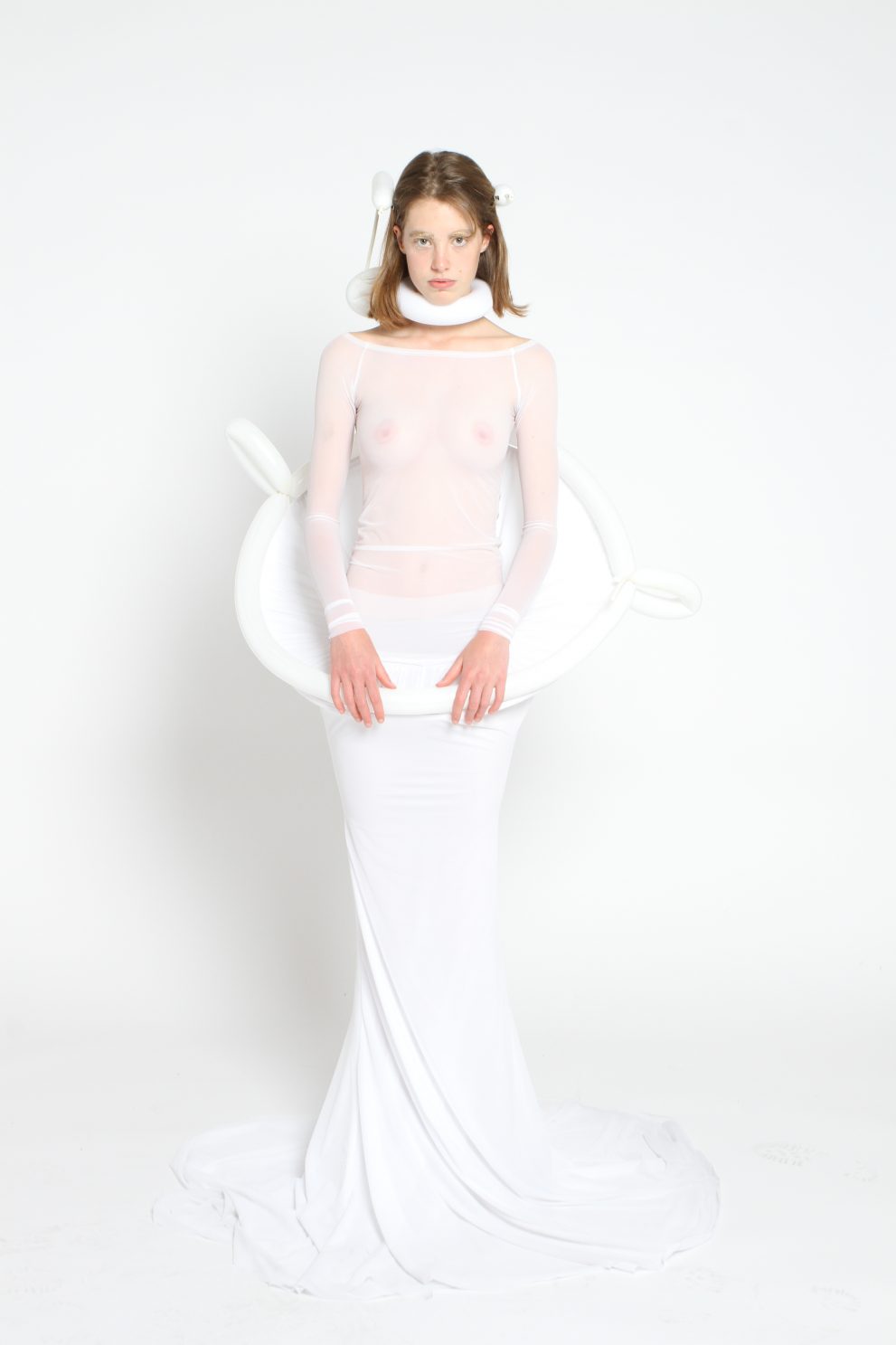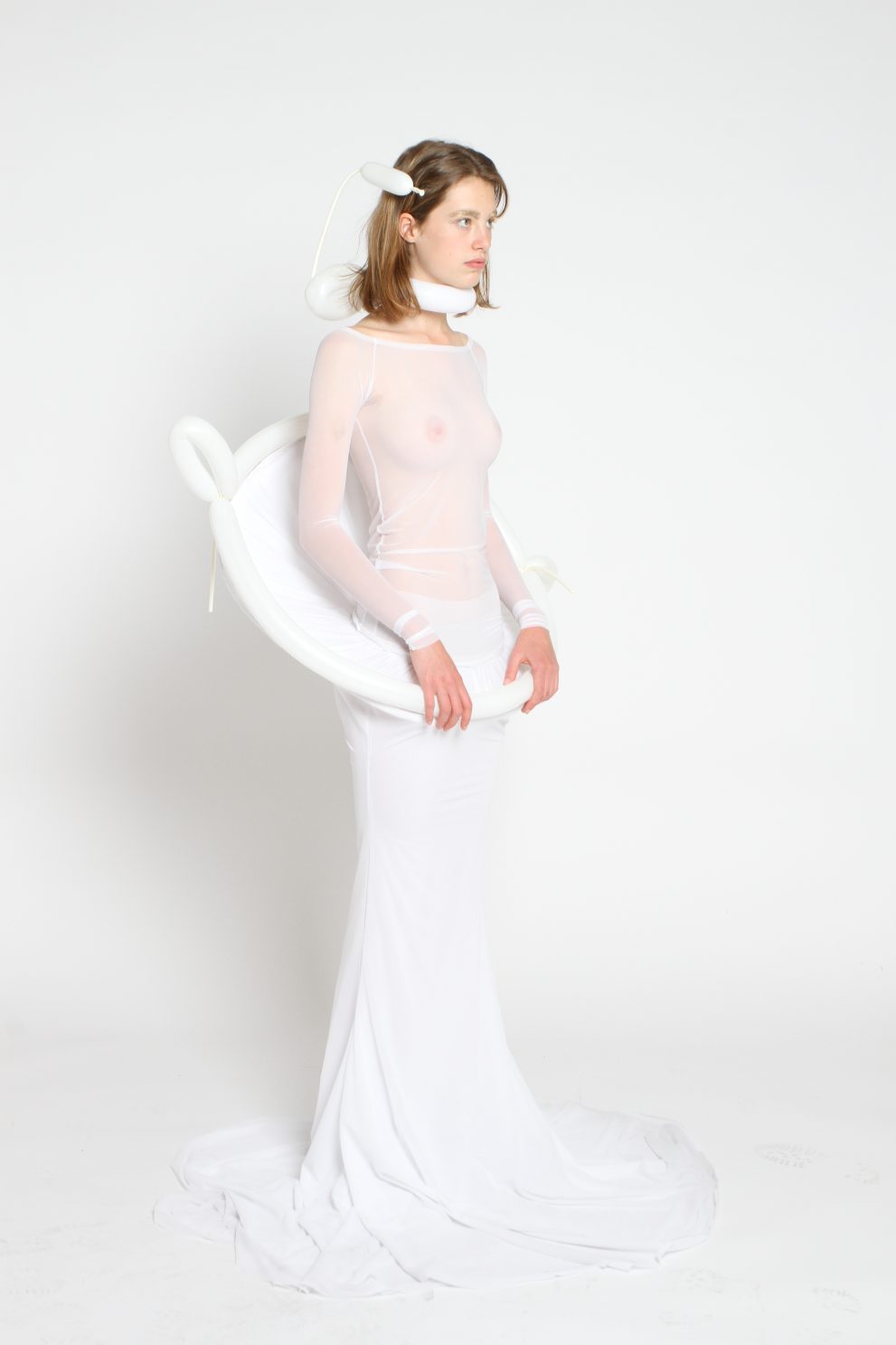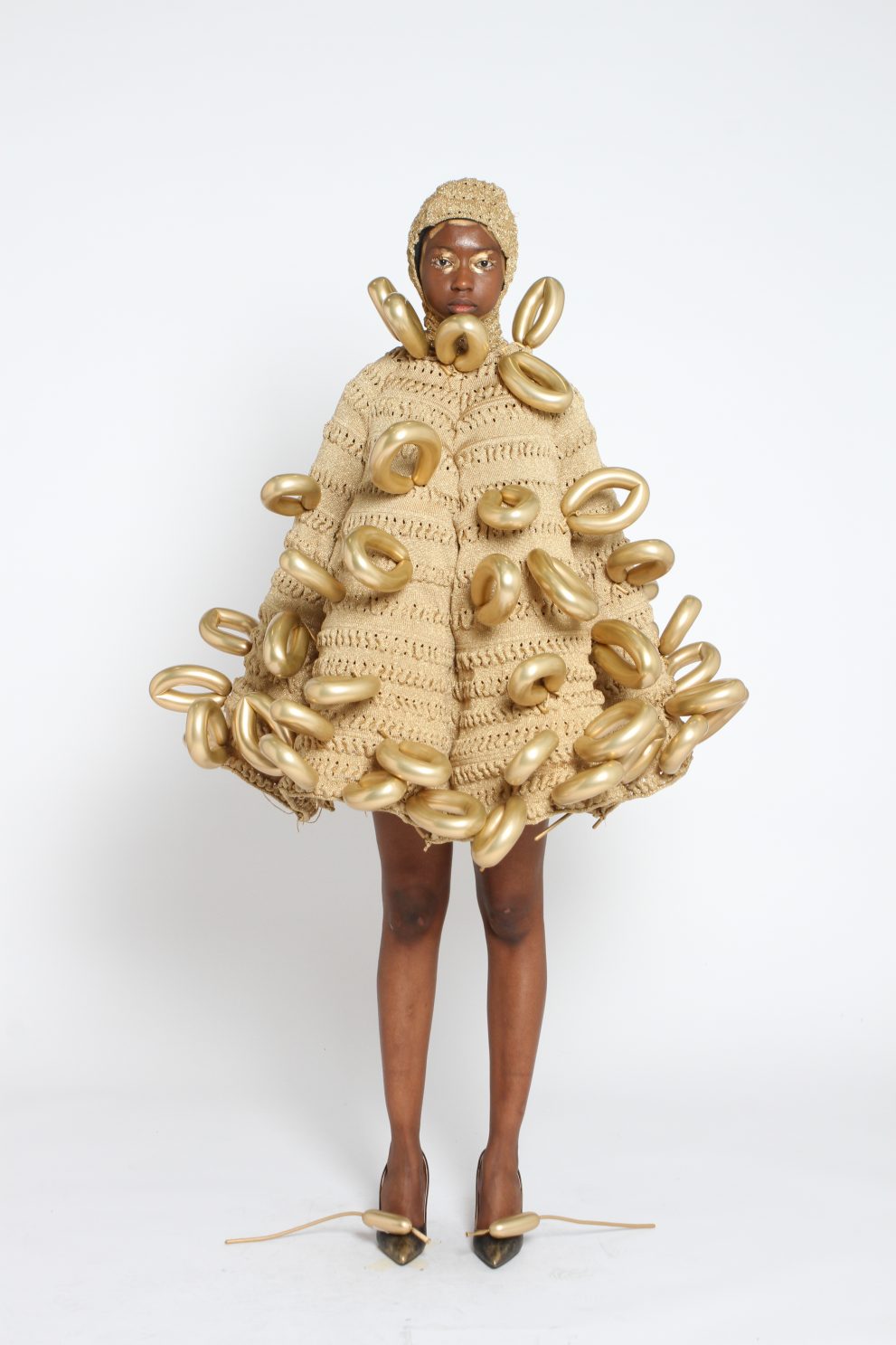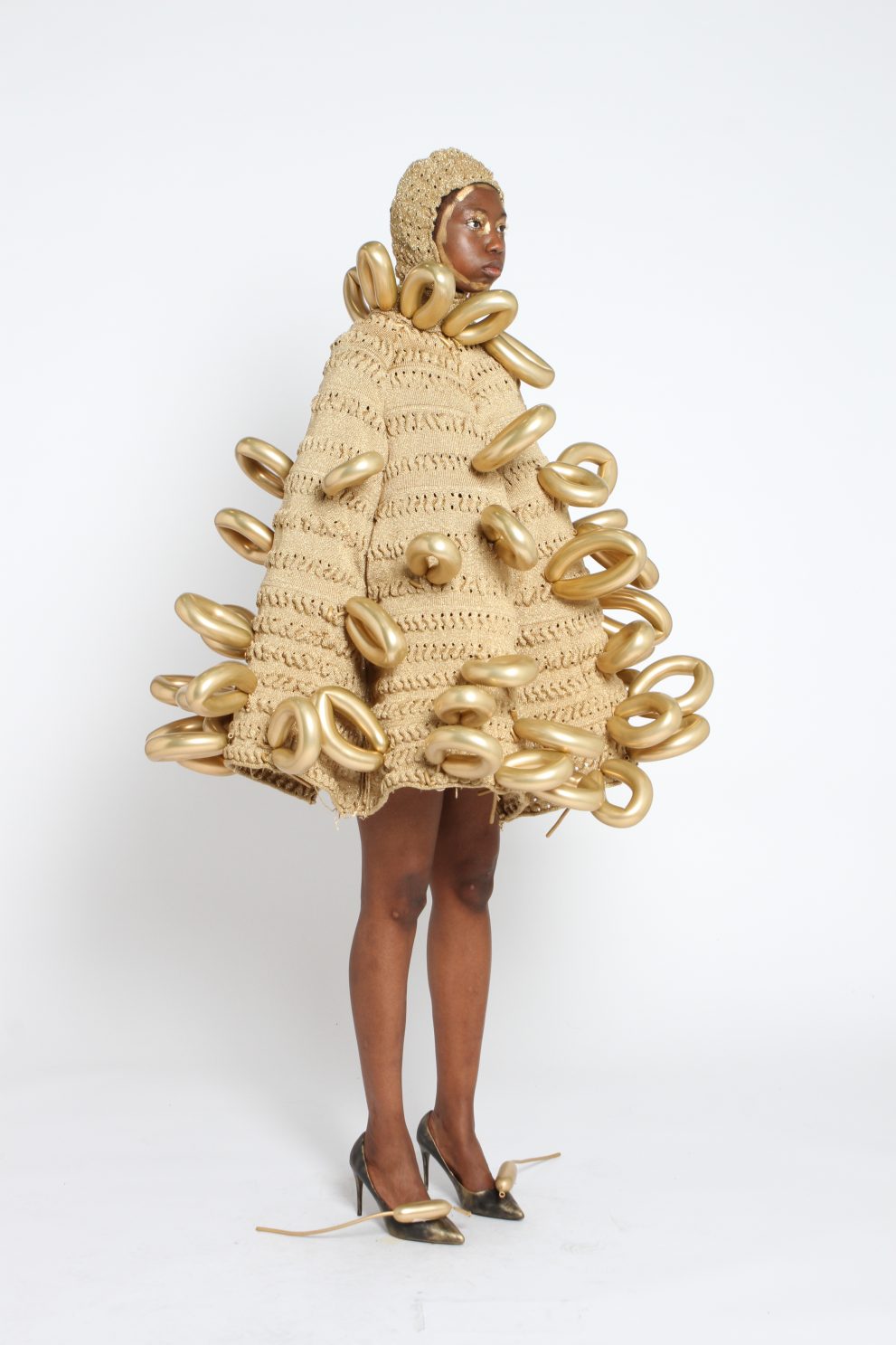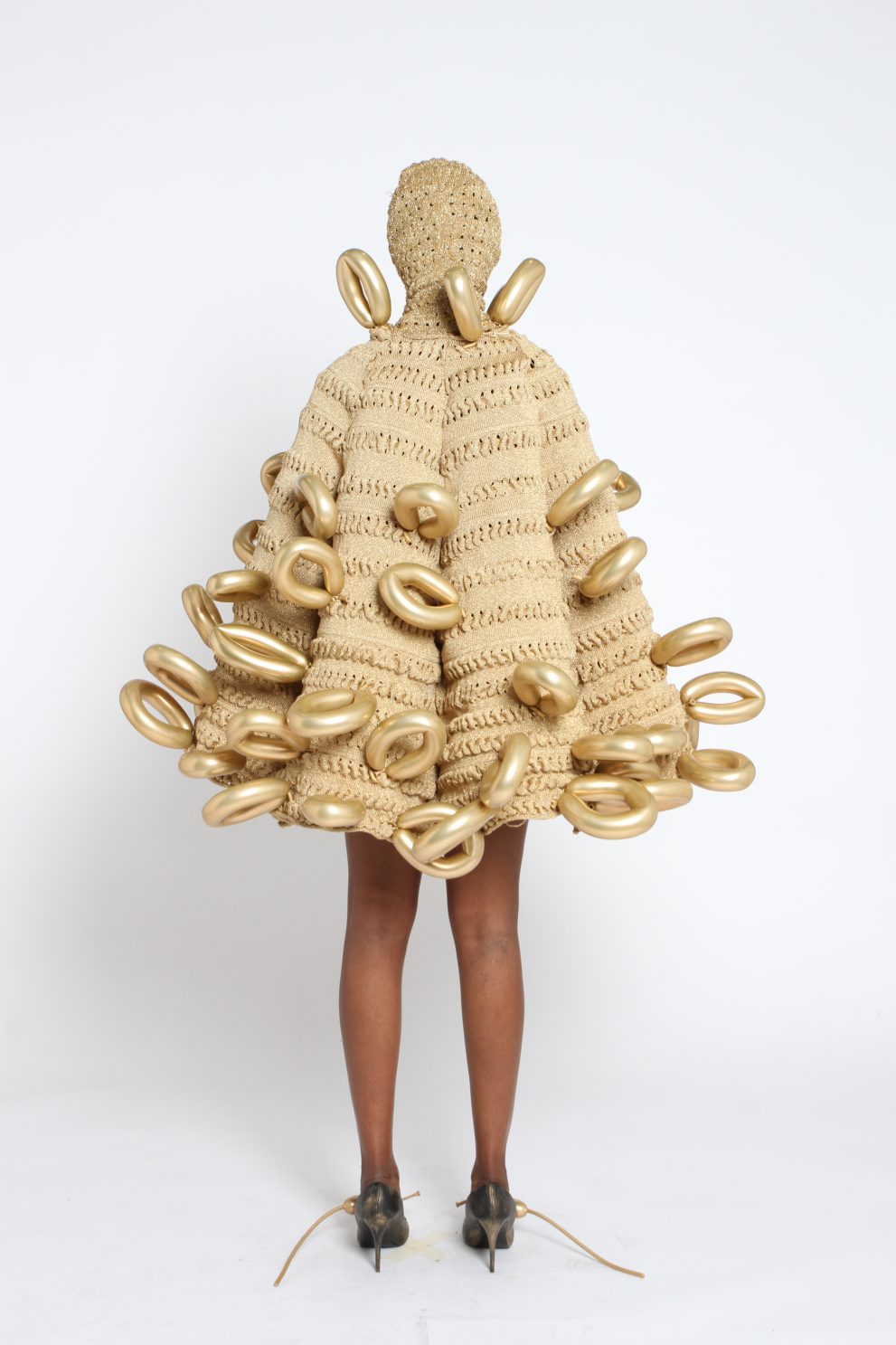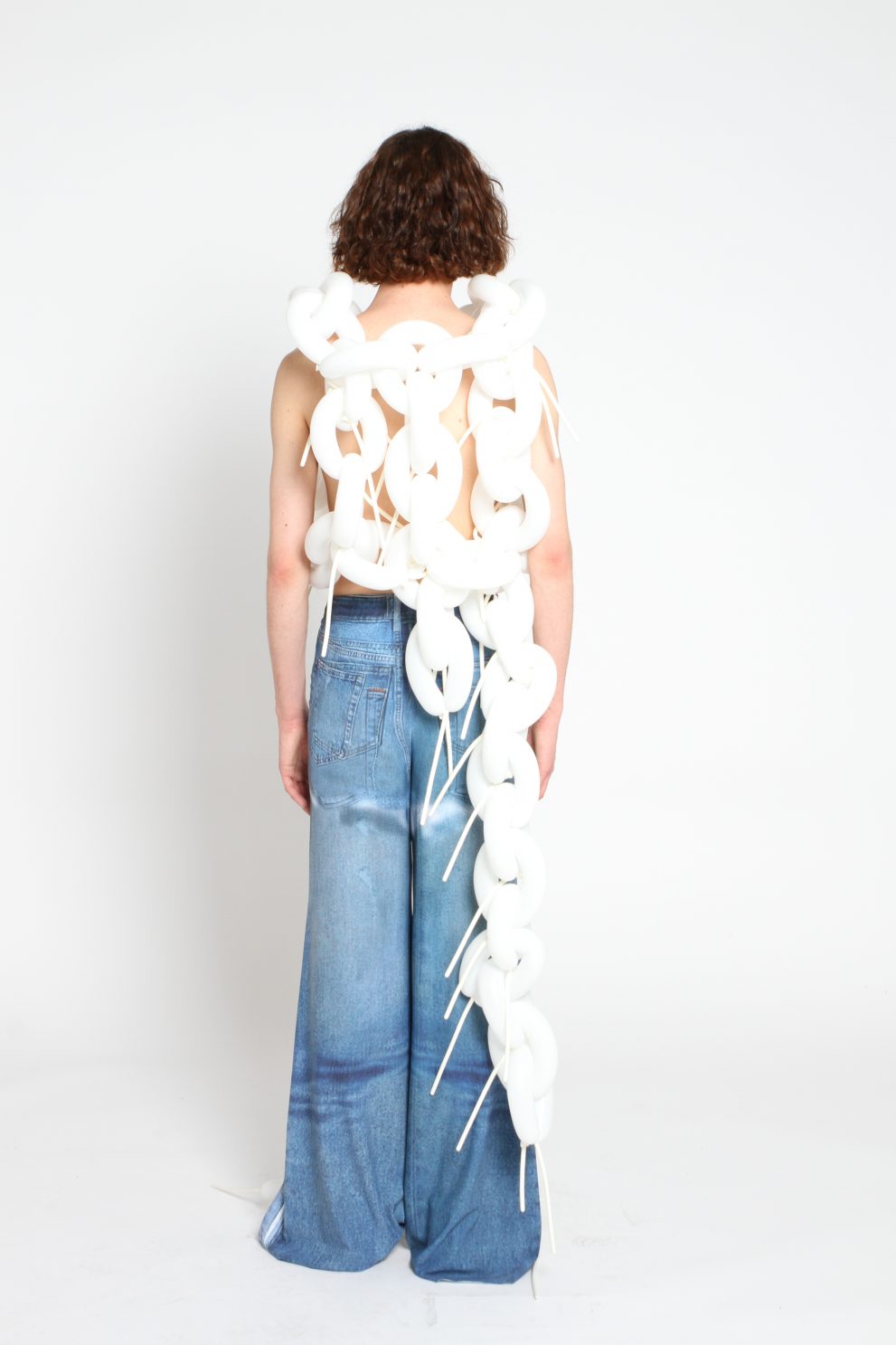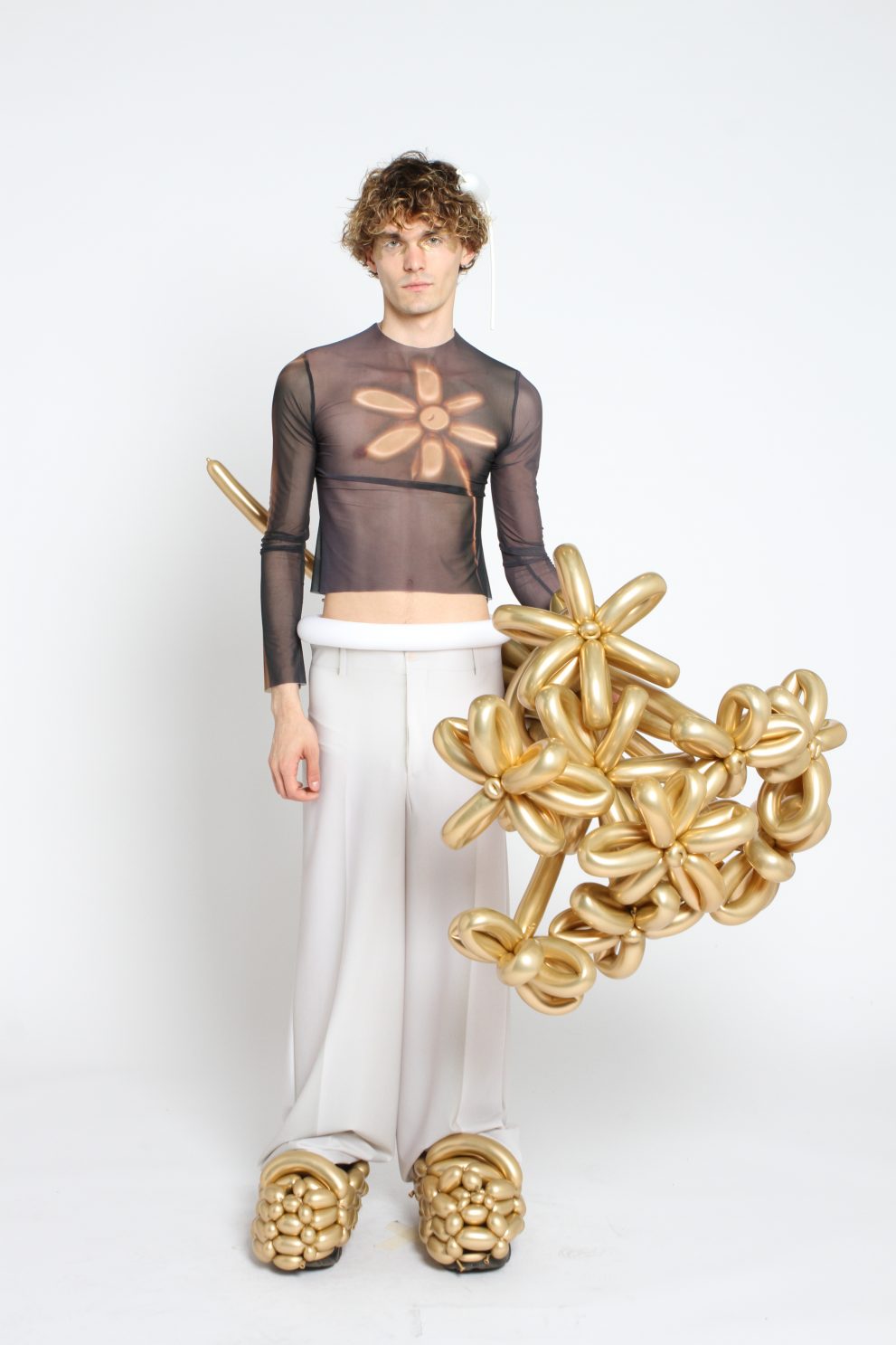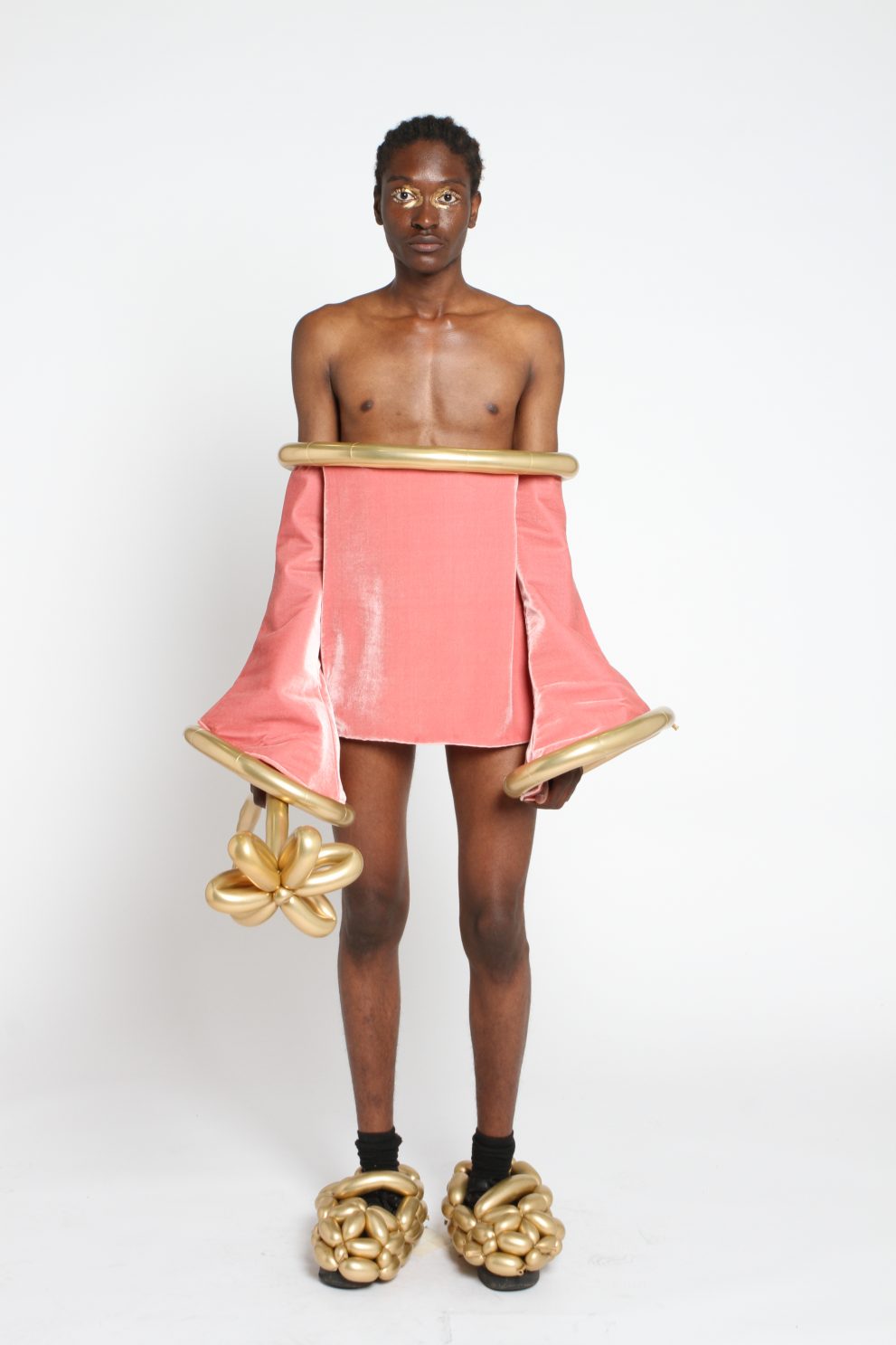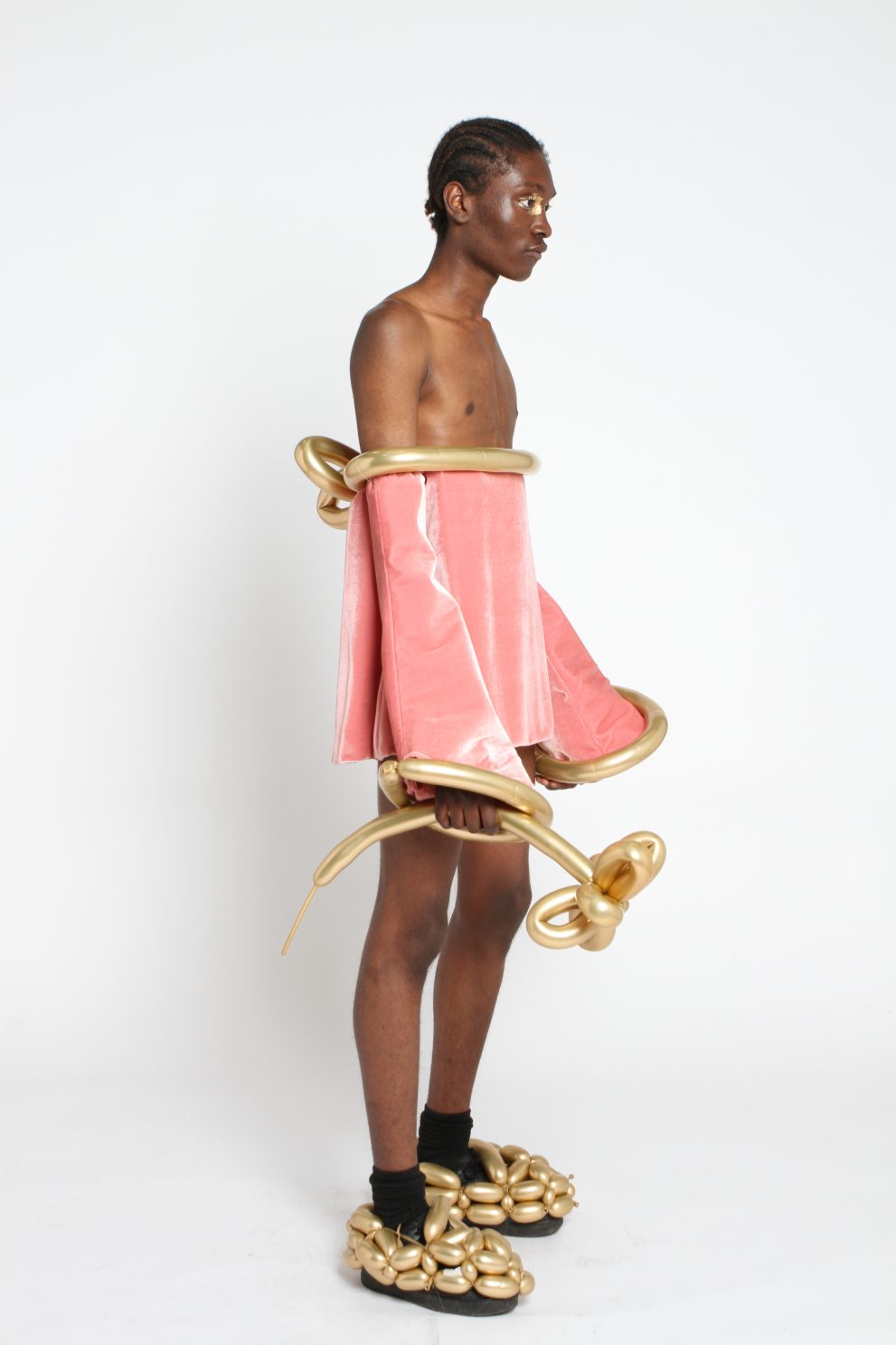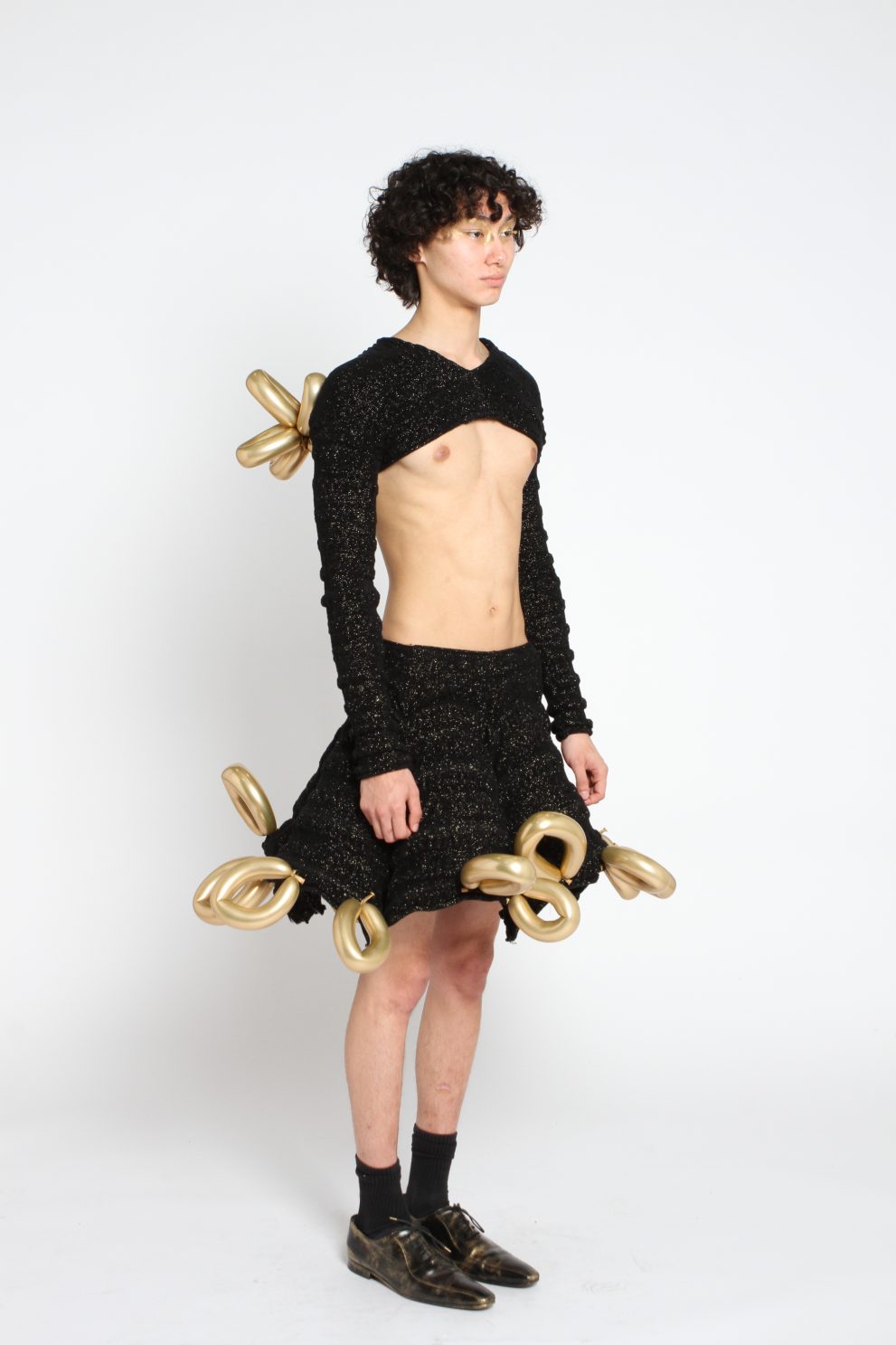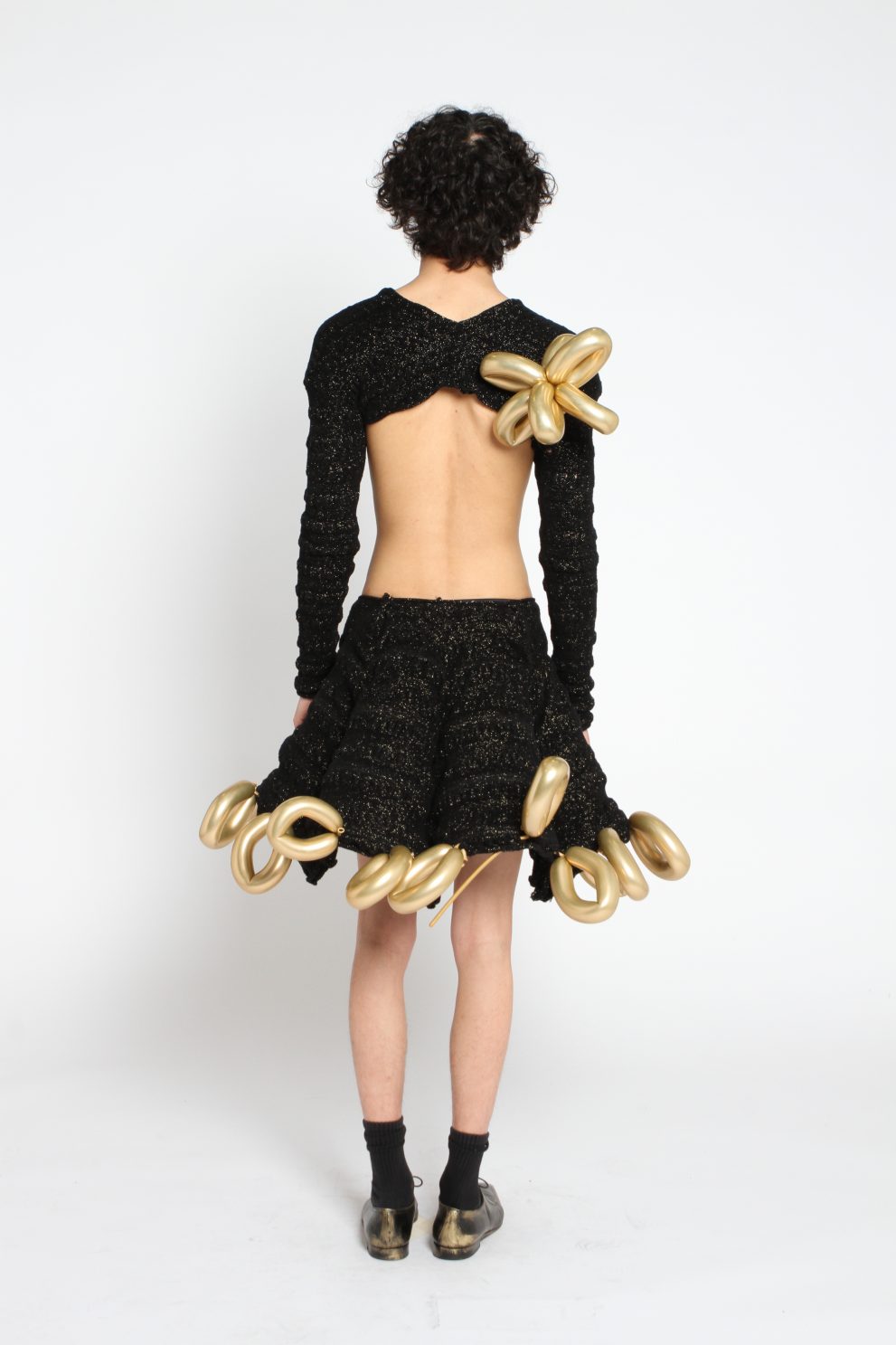DL: 20-06-2023
For over a century, the rubber balloon is a festive decorative element used for special and recreational events.
Its rounded shapes and bright colors make it a recognized eye-catcher. Inexpensive, it’s often used in large numbers during parties. In this sense, it represents kitsch. It’s also an object with a very limited lifespan: air escapes from it so the balloon withers, or because of heat or clumsy movement, it can burst.
In this collection, it is integrated into garments ranging from everyday to the most extravagant. It refers to several concepts: temporality, functionality and aesthetics. By questioning all these concepts, it is one of the elements that most marks our time today. I’m not saying it’s the most modern, but it’s undoubtedly one of today’s most contemporary objects.
Thus the balloon has a beginning and an end of life. Inflating it inevitably means deflating it at some point. It exists, and soon after it’s gone. I can then inflate a new one and repeat this step ad infinitum. Its cyclical renewal belongs to our will: through our action, it comes to life. On the other hand, we don’t decide when or how it will deflate, unless we act on it, but that’s not our aim here. Once the balloon is inflated with air, it takes on a sort of life of its own, which paradoxically leads it to the end of its life.
This continuous renewal is a metaphor for the way consumption works today.
Fashion has an economic function. It leads to consumption, with its constant renewal of desire. Trends are the embodiment of this renewal: they are temporary and impactful, prompting us to model ourselves on them. Our clothing, or at least our wardrobe, hasn’t really changed since the 90s: we still wear jeans, whether baggy or skinny, holey or finely knitted sweaters, tops and sneakers. The economic situation of today’s Western world has been relatively stable since the late 70s, so our clothes have remained constant too. There has been no drastic change in our everyday dress codes. We haven’t gone back to wearing crinolines, shorts and corsets since the last century, because the economic and political situation is totally different from what it used to be.
We’re all about functionality. We need practical outfits to carry out all our movements and accompany our working days. A worker’s outfit is not radically different from that of an everyday man: pants and a jacket. Perhaps it will differ with another more symbolic color, to which we add technical finishings.
From this constant, a kind of oscillation of opposites takes shape in the trend, from maximalism to minimalism, from kitsch to conceptual, from preppy to destroy, from loose to skinny. These concepts change and vary with the seasons, but the clothes are ultimately the same and the essential remains unchanged.
The balloon embodies quite well this call to desire and its cyclical renewal.
In the common sense, kitsch is the use of bad taste that we hijack for aesthetic pleasure.
It’s about the popular and the cheap which is sometimes considered ugly. Kitsch is therefore entirely dependent on taste: it’s either beautiful or ugly, and in some cases, it’s beautiful because it’s ugly. For this reason, it is purely aesthetic and therefore to link it to a functional wardrobe is to link it to a value it denies: efficiency
It rejects all other values not related to aesthetics. Purely contemplative, it brings with it an almost dictatorial vision of taste. We have to choose between «it’s beautiful» or «it’s ugly». It rejects nuance and efficiency, imposing an idealized beauty as the supreme value. With this hegemonic ambition, kitsch denies individuality. It thus leads to a crisis of authenticity. We want to strive towards this ideal and to resemble it even if it means pretending. It’s then that a game of pretense takes shape, where copies of «the beautiful» take on value. The aesthetics of fake and the fake itself take on as much value as the originals.
At the end of the day, a well-made counterfeit is just as valuable visually as the real thing – you can’t tell the difference between what’s fake and what’s real. In this confusion, fake is just as good as true.
Fast-fashion tends to copy designers to make affordable versions. In this way, it responds to a demand: to be able to enjoy the trend without having the means to follow it. We’ll buy a copy or a fake, a simplified version of what’s been on the runway and which will ultimately have just as much social value, since we usually don’t even know the original. This is where the social function of clothing is reinforced.
To take our own everyday wardrobe essentials, our timeless jeans and tailored pants and turn them into trompe-l’oeil is to turn them into fakes. Mind you, we’re not talking about copying, but about faking. If it were a copy, I’d have used exactly the same thread, fabric and assembly steps as my original, or at least I’d have tried to be as faithful as possible to my original in the case of a counterfeit. Copying therefore has the meaning of duplicating.
False pretenses of clothing punctuate my collection and create my wearable wardrobe.
Fashion pushes us to be part of the trend, to follow the trend, because anyone who doesn’t is rejected by the social group.
Like kitsch, it imposes its vision of beauty and has the power to decide what is and isn’t beautiful. Fashion pushes us to conform and erase ourselves.
Balloons are 100% biodegradable and compostable
DL: 20/06/2023
15:30
